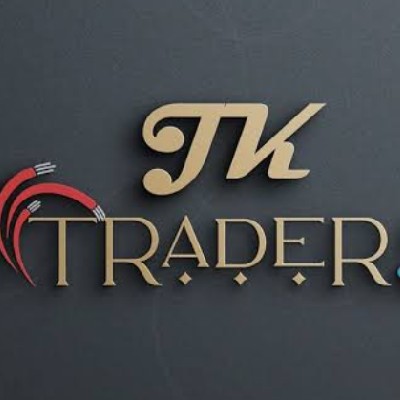


Cena AchainACT
Jakie jest Twoje dzisiejsze nastawienie do Achain?
Informacje o Achain (ACT)
Kryptowaluta Achain (ACT) została wprowadzona na rynek w 2017 roku. Jest to blockchain, który został zaprojektowany w celu dostarczenia platformy dla tworzenia i wdrażania inteligentnych kontraktów. Achain jest stworzony w oparciu o technologię DAG (graf kierunkowy acykliczny), co oznacza, że różne transakcje mogą być przetwarzane równolegle, co zwiększa skalowalność i wydajność sieci.
Jedną z głównych cech Achain jest jego elastyczność. Platforma ta umożliwia tworzenie własnych blockchainów i tokenów, co daje więcej możliwości dla użytkowników. Dzięki temu, Achain może obsługiwać różnorodne aplikacje w różnych dziedzinach, takich jak finanse, logistyka czy nieruchomości.
Achain oferuje również wysoką wydajność i bezpieczeństwo. Dzięki zastosowaniu DAG, sieć może przetwarzać do 1000 transakcji na sekundę, co jest znacznie szybsze niż niektóre tradycyjne blockchainy. Dodatkowo, Achain wykorzystuje algorytmy konsensusu, takie jak PoS (Proof of Stake) i PoW (Proof of Work), aby zapewnić bezpieczeństwo i stabilność sieci.
Kolejnym istotnym aspektem Achain jest jego ekosystem deweloperów. Platforma ta oferuje różne narzędzia programistyczne i biblioteki, które pomagają deweloperom w tworzeniu i wdrażaniu inteligentnych kontraktów. Dzięki temu, Achain staje się atrakcyjnym wyborem dla programistów, którzy chcą tworzyć aplikacje oparte na blockchainie.
Warto również wspomnieć, że Achain kładzie nacisk na rozwój społeczności. Projekty na tej platformie mają na celu wspieranie innowacji i kreatywności społeczności użytkowników. Istnieje również program nagród, który zachęca do budowania aplikacji i inicjatyw opartych na Achain.
Podsumowując, Achain to innowacyjna platforma blockchainowa, która oferuje elastyczność, wydajność i bezpieczeństwo. Dzięki możliwości tworzenia własnych blockchainów i tokenów, Achain ma duży potencjał do zastosowania w różnorodnych dziedzinach. Ta dynamiczna i rozwijająca się kryptowaluta zapewnia otwarte i kreatywne środowisko dla deweloperów i inwestorów.
Raport z analizy AI na temat Achain
Cena Achain w PLN na żywo dzisiaj
Historia cen Achain (PLN)
 Najniższa cena
Najniższa cena Najwyższa cena
Najwyższa cena 
Jaka jest najwyższa cena Achain?
Jaka jest najniższa cena Achain?
Prognoza ceny Achain
Kiedy jest dobry moment na zakup ACT? Czy zalecane jest teraz kupno lub sprzedaż ACT?
Jaka będzie cena ACT w 2026?
Jaka będzie cena ACT w 2031?
Często zadawane pytania
Jaka jest obecna cena Achain?
Czym jest 24-godzinny wolumen obrotu Achain?
Jaka jest najwyższa dotychczasowa wartość Achain?
Czy mogę kupić Achain na Bitget?
Czy mogę uzyskać stały dochód z inwestycji w Achain?
Gdzie mogę kupić Achain z najniższą opłatą?
Posiadane Achain według koncentracji
Adresy Achain według czasu posiadania

Globalne ceny Achain
- 1
- 2
- 3
- 4
- 5
Nowe notowania na Bitget
Kup więcej
Gdzie mogę kupić kryptowaluty?
Sekcja wideo — szybka weryfikacja, szybki handel

Oceny Achain
Bitget Insights





Powiązane aktywa
Dodatkowe informacje na temat Achain
Omówienie monety
O monecie
Informacje handlowe
Aktualizacje monety




















.png)













Dane z mediów społecznościowych dot. Achain
W ciągu ostatnich 24 godzin wynik sentymentu mediów społecznościowych wobec Achain wynosił 3, a sentyment mediów społecznościowych do trendu cenowego Achain wynosił Byczy. Ogólny wynik Achain w mediach społecznościowych wyniósł 0, co plasuje go na 846. miejscu wśród wszystkich kryptowalut.
Według LunarCrush, w ciągu ostatnich 24 godzin kryptowaluty zostały wspomniane w mediach społecznościowych łącznie 1,058,120 razy, przy czym Achain był wspominany ze współczynnikiem częstotliwości 0%, zajmując 1081. miejsce wśród wszystkich kryptowalut.
W ciągu ostatnich 24 godzin było łącznie 13 użytkowników dyskutujących o Achain, z łączną liczbą Achain wzmianek o 1. Jednak w porównaniu z poprzednim 24-godzinnym okresem, odnotowano spadek liczby unikalnych użytkowników o 0% oraz spadek wzmianek o 0%.
Na Twitterze w ciągu ostatnich 24 godzin pojawiło się łącznie 0 tweetów wspominających Achain. Wśród nich 0% ma bycze nastawienie na Achain, 0% ma niedźwiedzie nastawienie na Achain, a 100% jest neutralny na Achain.
W serwisie Reddit w ciągu ostatnich 24 godzin pojawiło się 0 postów wspominających o Achain. W porównaniu z poprzednim 24-godzinnym okresem, odnotowano 0% spadek liczby wzmianek.
Całościowy przegląd społecznościowy
3